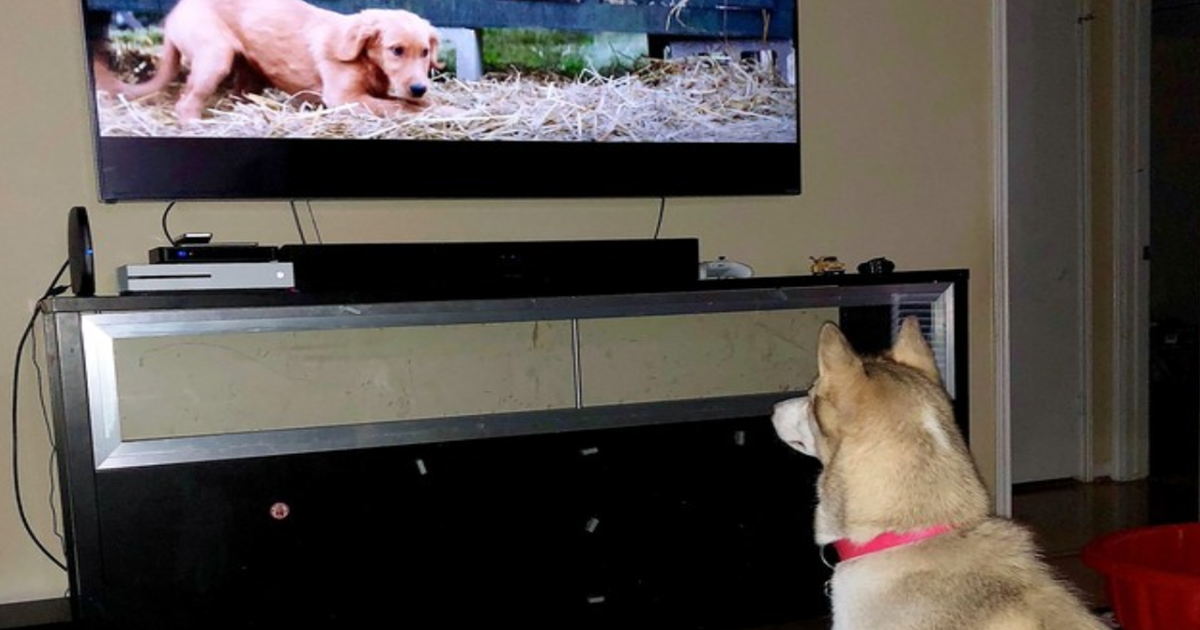Have you ever seen a dog watching TV? Whether or not dogs show interest in TV depends on their individual personality and breed mix.
According to nicholas dodmanAccording to a veterinarian at Tufts University, dogs can definitely understand images and sounds coming from television. How they react to them is another matter!
When dogs watch TV, what do they watch?
A study published in 2013 in the journal animal cognition found that dogs could visually recognize images of other dogs among photographs of humans and other animals. They are also able to recognize on-screen animals and familiar sounds like barking coming from the set.
However, their unique vision means that although they can recognize images broadcast on television, they see them slightly differently than we do. When dogs watch TV, they only see the colors of the yellow and blue spectrum. They have dichromatic vision whereas humans see the full range of colors. Dogs see every color yellow, blue, brown or gray.
To give you an idea of what dogs see, the following photo was played Dog Vision Image Processing Tool, Notice how all the colored balls appear to the dog as yellow, blue or brown.
Despite their poor color perception, dogs register moving images more quickly than humans. This may explain why modern televisions are more likely to attract their attention.
Older sets show fewer frames per second. According to Dodman, to the dog it would appear to flicker “like something from a 1920s movie”. HDTV, on the other hand, has a much higher number of frames per second, making it much easier on the eyes of dogs watching TV.
Personality makes a lot of difference.
Biology aside, whether or not dogs watch TV and react to its content depends largely on their individual personality.
“Just like people, different dogs have different personalities,” Dodman said. National Geographic, “Some are regional, some are not. Some people like it, some people hate it. Some are hunters, some are not. Some are pushy, some are shy. It takes all kinds of dogs to go around the world.”
When dogs watch TV their reactions can range from curious head tilts to barking and jumping on the screen. Dodman explains that many dogs “have become desensitized to television. When they see a dog [on TV]They [may] Think, ‘Those people just hang out on television. They never really move around.”
Breed may also play a role in how dogs react to television.
Hound dogs are motivated by scent and are less likely to care about moving pictures. On the other hand, herding dogs are more likely to show interest in the activities taking place on set because they are bred to keep an eye on subtle activities.
DogTV entertains pups using science.
Dodman is the main scientist behind dogtv, an HDTV channel dedicated to keeping pups happy when their humans are away. Not only does the programming have a higher number of frames per second, but its colors are set to accommodate the dogs’ yellow-blue visual spectrum.
Powerplants can choose from various programming “modes” such as relaxation, stimulation, and exposure. Relaxation mode includes soothing music, dim colors and dogs relaxing on the beach. The excitement features puppies frolicking in the pool, chasing balls and romping in the grass. Finally, dogs in training may benefit from doorbell ringing and home-related situations of exposure mode.
No matter what type of programming you leave on, Dodson says television eventually fades into the background for most dogs. Still, it’s better than “spinning wheels all day while your boss is away.”
Do your dogs watch TV? Share your funniest stories and cutest photos in the comments!
h/t to National Geographic

